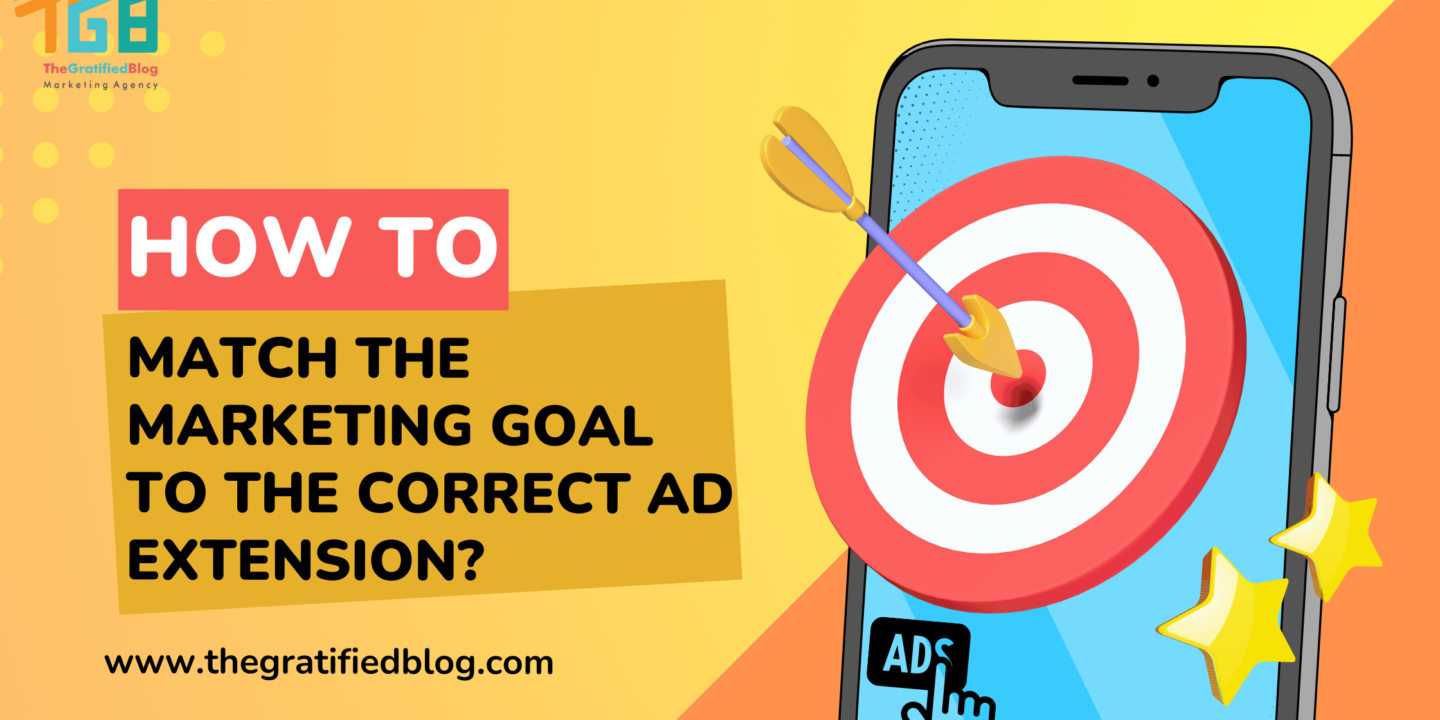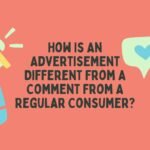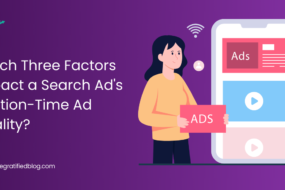
Marketing goal and ad extension are two important entities that must go hand in hand to create a successful online marketing campaign. However, not all businesses know how to pair the two together. This blog post will discuss marketing goals and the types of ad extensions available. We will also provide tips on how to match the marketing goal to the correct ad extension for optimal results.
So, let’s begin;
What Are Marketing Goals?
Marketing goals are particular targets businesses or organizations set to accomplish through their marketing activities. These objectives may vary depending on the company’s general business goals, the target market, and the specific marketing initiatives they undertake.
Types Of Marketing Goals
There are various types of marketing goals that a business or organization can set, depending on their overall business objectives. Some common types of marketing goals include:
- Improve Brand Awareness,
- Expand Market Share,
- Increase Customer Engagement,
- Improve Customer Retention, etc.
Now that you know what marketing goals are and their few types. Now, let’s dive directly into the concept of Ad extensions.
What Are Ad Extensions?, And What Are The Different Types Of Ad Extensions Available?
Ad extensions are a type of Google Ads feature that enables advertisers to include additional information. These extensions expand the ad format and provide additional information to potential customers, making the ad more informative and enticing.
By using ad extensions, advertisers can improve the overall performance of their ads by increasing click-through rates, improving the quality score, and enhancing user experience.

Types Of Ad Extensions
Here are a few types of ads extensions available for business:
- Sitelink extensions
Sitelink extensions are a type of ad extension that allows advertisers to add additional links to their ad, directing users to specific pages on their website. These links can appear below the ad copy and can highlight various pages or products within a website.
This ad extension is helpful for businesses that want to promote specific products, services, or pages on their website. Sitelink extensions also provide users with a more targeted and relevant experience by directing them to pages that match their search intent.
- Callout extensions
Callout extensions are a type of ad extension that allows advertisers to highlight special offers, features, or benefits of a product or service.
Callouts are short snippets of text that appear below the ad copy and are designed to draw attention to a particular aspect of the advertised product or service. This ad extension is helpful for businesses that want to emphasize their unique selling points and differentiate themselves from their competitors.
- Call extensions

Call extensions are a type of ad extension that allows users to call the business directly from the ad. This ad extension is helpful for businesses that rely on phone calls for leads or sales, such as local businesses or service providers.
Call extensions make it easy for users to contact the business directly from the ad without navigating to the website or searching for contact information. Advertisers can also track call metrics and performance to understand their ads’ effectiveness better.
- Location extensions
Location extensions are a type of ad extension that displays the business’s address, phone number, and map location in the ad. This ad extension is helpful for businesses with a physical location and wants to drive foot traffic to their store.
Location extensions make it easy for users to find the business’s location and get directions. They can also help improve ad performance by increasing click-through rates and ad relevance.
Advertisers can also track location metrics and performance to understand better their ads’ effectiveness in driving offline conversions.
- Review extensions
Review extensions are a type of ad extension that allows advertisers to include third-party reviews and ratings in their ads.
This ad extension is helpful for businesses that want to build trust and credibility with potential customers by highlighting positive reviews and feedback from reputable sources. Review extensions can appear as a quote from a review or as a star rating and can be a powerful tool for increasing click-through rates and improving the ad’s overall effectiveness.
- Price extensions
Price extensions are a type of ad extension that allows advertisers to display their products or services with prices and descriptions directly in the ad.
This ad extension is helpful for businesses that sell products or services at different price points and want to give users a quick and easy way to compare prices.
Price extensions can also include a call-to-action button, such as “Buy Now” or “Book Now,” making it easy for users to take action directly from the ad.
- Promotion extensions
Promotion extensions are a type of ad extension that allows advertisers to promote special offers and discounts in their ads. This ad extension is helpful for businesses that want to attract new customers or drive sales during specific promotions or seasonal events.
Promotion extensions can include details such as the promotion period, coupon codes, and a call-to-action button, making it easy for users to take advantage of the offer directly from the ad.
Promotion extensions can also help increase click-through rates and ad relevance by compelling users to click on the ad.
- App Extension
App extensions allow advertisers to include a link to their mobile app within their ads, which users can click to download or launch the app directly from the ad.
App extensions are a great way to promote your mobile app and encourage users to download and engage. By providing an easy and convenient way for users to access your app, app extensions can drive more installs and increase engagement with your app.
They are also an excellent way to showcase your app’s features and functionality, which can help attract users who are interested in what your app offers.
- Lead Form Extension
Lead form extensions allow advertisers to include a lead generation form within their ads, which users can fill out without leaving the ad. Lead form extensions are a great way to capture leads directly from your ads and make it easy for users to express interest in your offerings.
Lead form extensions can increase lead volume and quality by providing a seamless and efficient way for users to submit their contact information.
Additionally, lead form extensions are a great way to track and measure the success of your ad campaign, as you can easily capture leads and follow up with them directly from the form.
- Image Extension
Image extensions allow advertisers to add an image to their search ads, making the ad more visually appealing and eye-catching. By providing a visual element to your ad, image extensions can help attract more attention and improve engagement rates.
Additionally, image extensions can help showcase your product or service more compellingly, encouraging users to click and learn more. Image extensions are also a great way to differentiate your ad from the competition and stand out in a crowded marketplace.
However, it’s important to note that not all ad campaigns will benefit from using image extensions, and it’s essential to consider your specific advertising goals and target audience when deciding whether to use them.
Why Do We Need To Choose A Perfect Ad Extension?
Well, there are several reasons for choosing a perfect ad extension. However, here are a few important reasons:
- Better ad ranking: Ad extensions can positively affect your ad rank, which is a crucial factor in determining the placement and visibility of your ads. By providing additional information to potential customers through ad extensions, you can improve your ad’s relevance and quality score, leading to higher ad rankings.
- Increased ad engagement: Ad extensions can make your ads more attractive to users, leading to higher engagement rates. By offering additional information such as location, reviews, or call-to-action buttons, ad extensions can encourage users to interact with your ads, resulting in more clicks, conversions, and sales.
- Staying competitive: Finally, selecting the right ad extension is crucial for staying competitive in today’s digital landscape. With more businesses using Google Ads and other PPC platforms to promote their offerings, leveraging all the available tools and features to stand out and reach your target audience effectively is essential. You can create compelling and informative ads using the right ad extension, leading to higher engagement rates, better ad ranking, and more conversions.
- Better use of your PPC budget: Ad extensions can also help you make the most out of your PPC (pay-per-click) budget by providing additional opportunities to showcase your brand and drive traffic to your website. By selecting the appropriate ad extension, you can increase the visibility of your ad and make it more compelling to potential customers.
- Improved lead quality: Choosing the correct ad extension helps attract potential customers who are more likely to convert, improving the quality of your leads. By providing additional relevant information through ad extensions, you can attract users interested in your offerings, making it more likely for them to take action.
How To Match The Marketing Goal To The Correct Ad Extension?
Now that we know the marketing goals and types of ad extensions available let’s discuss how to pair them together for optimal results. Pairing the right marketing goal with the correct ad extension is essential for a successful online marketing campaign.
Below are some tips on how to do this:
- If the goal is to increase brand awareness, choose an ad extension to make the ad more visible, such as adding an image or video.
- If the goal is to generate leads, choose an ad extension that allows users to quickly contact the business, such as a call-to-action button or click-to-call.
- If the goal is to drive sales, choose an ad extension that provides more information about the product or service, such as product reviews or pricing.
These tips will help businesses pair the right marketing goal with the correct ad extension for optimal results. Matching The Marketing Goal To The Correct Ad Extension is essential for success!
Wrapup
We hope you found this article helpful. Matching The Marketing Goal To The Correct Ad Extension is essential for success! By following these tips, businesses can create a successful online marketing campaign. If you have any questions, please feel free to comment below. Thanks for reading!








No Comments